The AMD Ryzen Threadripper 1950X and 1920X Review: CPUs on Steroids
by Ian Cutress on August 10, 2017 9:00 AM ESTAshes of the Singularity Escalation
Seen as the holy child of DirectX12, Ashes of the Singularity (AoTS, or just Ashes) has been the first title to actively go explore as many of DirectX12s features as it possibly can. Stardock, the developer behind the Nitrous engine which powers the game, has ensured that the real-time strategy title takes advantage of multiple cores and multiple graphics cards, in as many configurations as possible.
As a real-time strategy title, Ashes is all about responsiveness during both wide open shots but also concentrated battles. With DirectX12 at the helm, the ability to implement more draw calls per second allows the engine to work with substantial unit depth and effects that other RTS titles had to rely on combined draw calls to achieve, making some combined unit structures ultimately very rigid.
Stardock clearly understand the importance of an in-game benchmark, ensuring that such a tool was available and capable from day one, especially with all the additional DX12 features used and being able to characterize how they affected the title for the developer was important. The in-game benchmark performs a four minute fixed seed battle environment with a variety of shots, and outputs a vast amount of data to analyze.
For our benchmark, we run a fixed v2.11 version of the game due to some peculiarities of the splash screen added after the merger with the standalone Escalation expansion, and have an automated tool to call the benchmark on the command line. (Prior to v2.11, the benchmark also supported 8K/16K testing, however v2.11 has odd behavior which nukes this.)
At both 1920x1080 and 4K resolutions, we run the same settings. Ashes has dropdown options for MSAA, Light Quality, Object Quality, Shading Samples, Shadow Quality, Textures, and separate options for the terrain. There are several presents, from Very Low to Extreme: we run our benchmarks at Extreme settings, and take the frame-time output for our average, percentile, and time under analysis.
All of our benchmark results can also be found in our benchmark engine, Bench.
MSI GTX 1080 Gaming 8G Performance
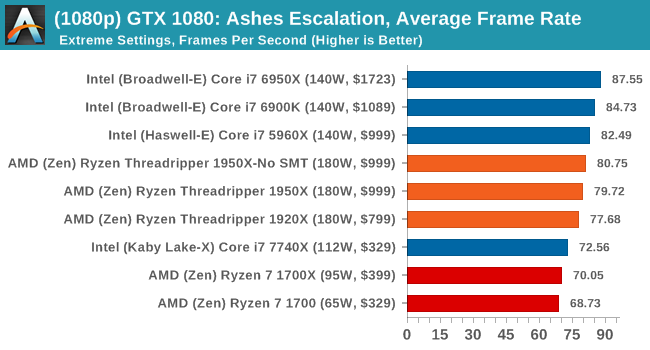
1080p


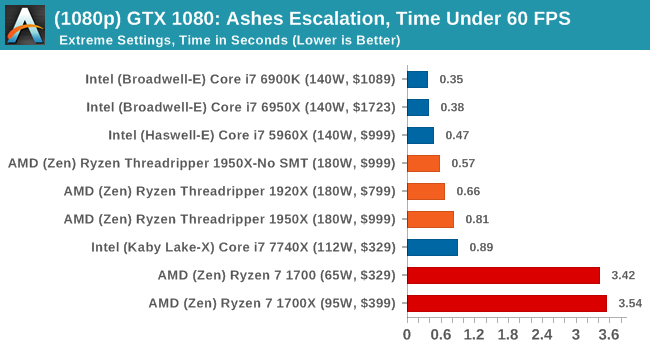
4K
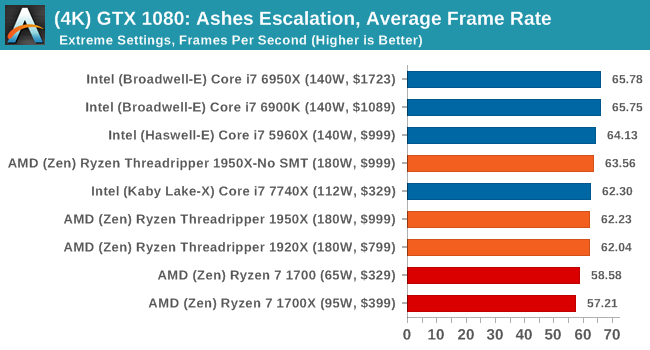
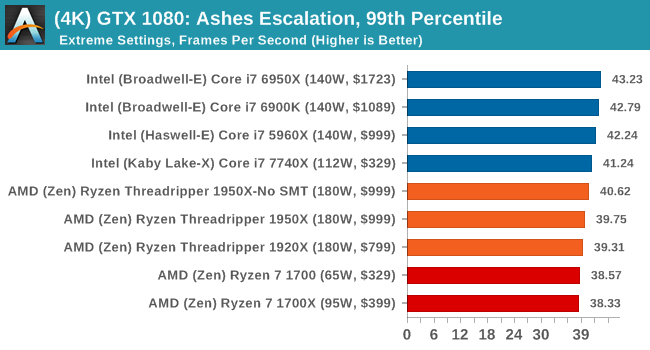
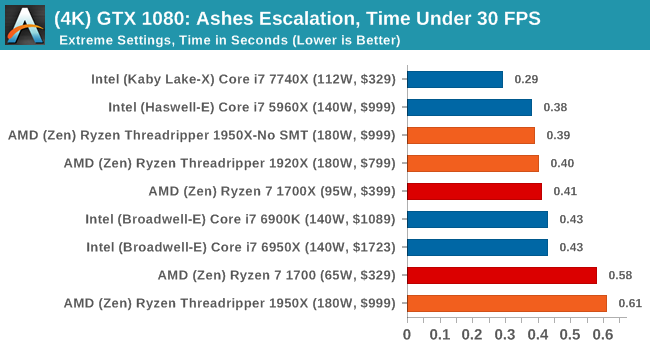
ASUS GTX 1060 Strix 6G Performance
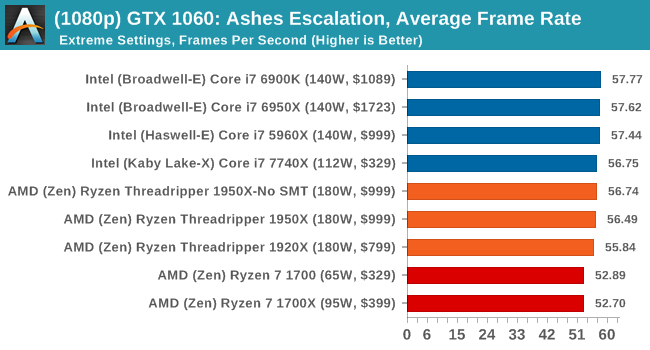
1080p

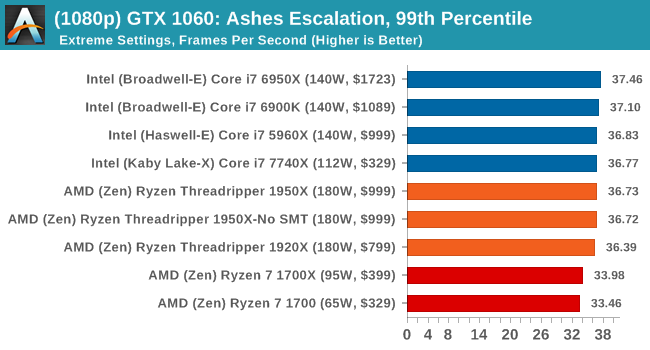
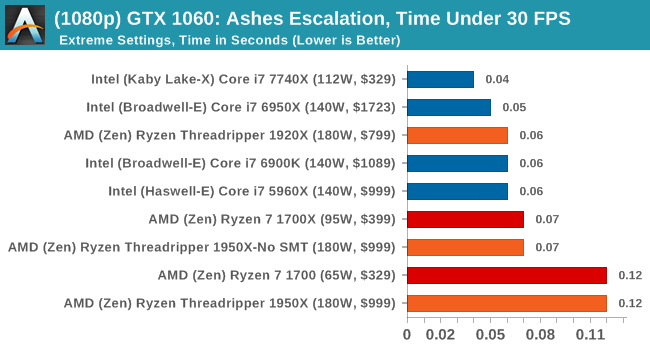
4K
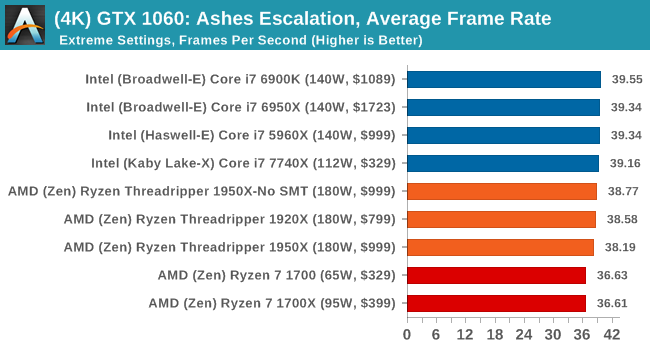
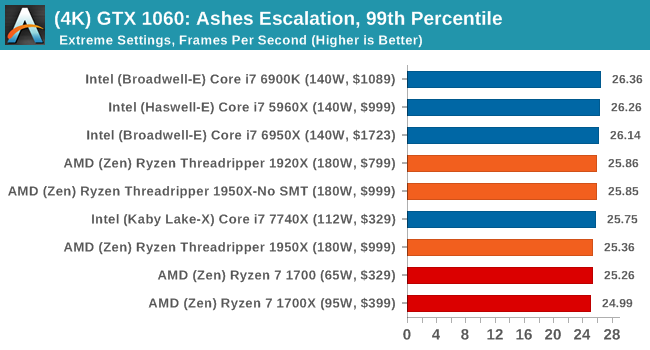

Sapphire Nitro R9 Fury 4G Performance
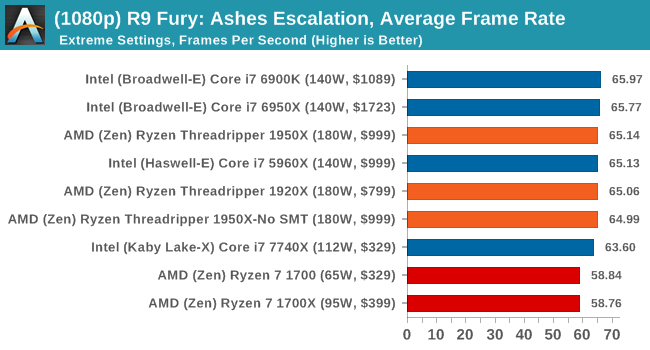
1080p

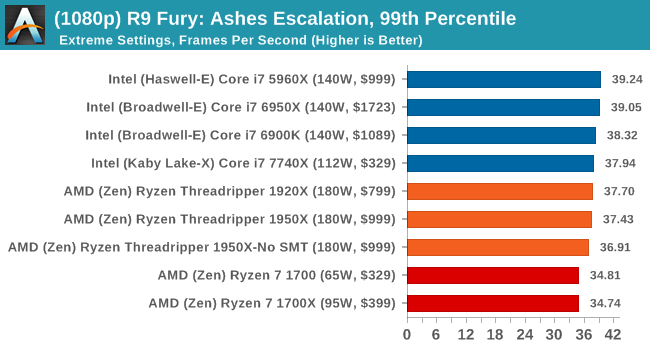
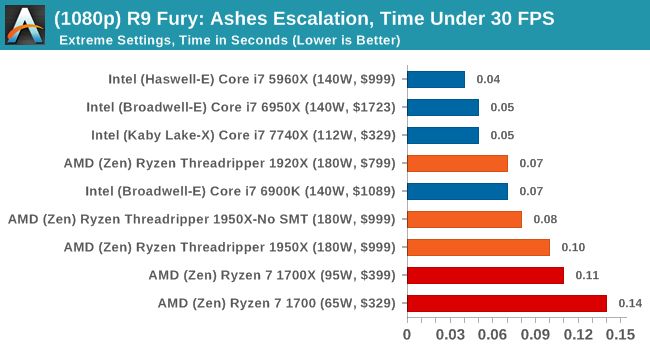
4K
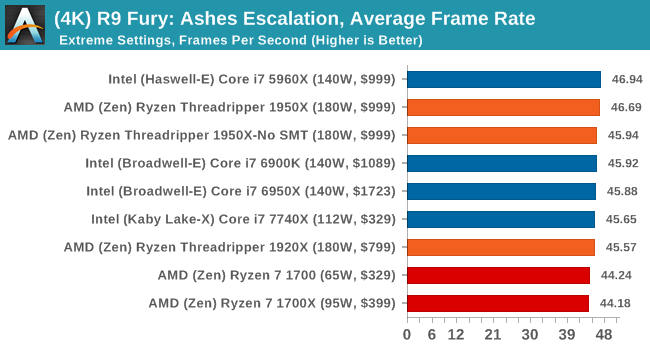
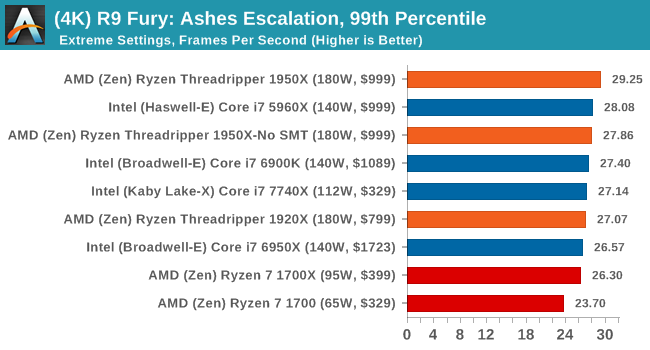
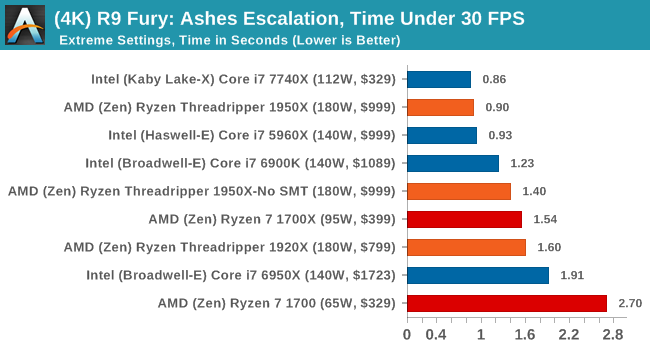
Sapphire Nitro RX 480 8G Performance

1080p

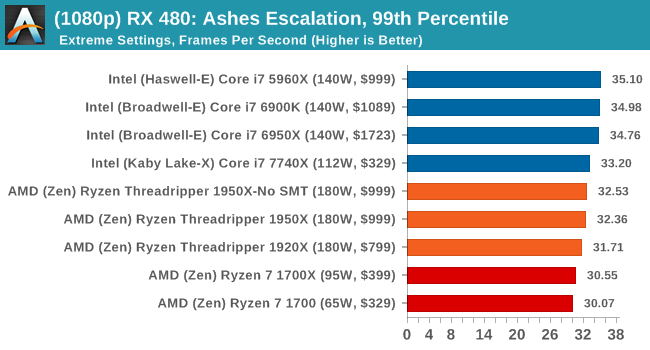

4K

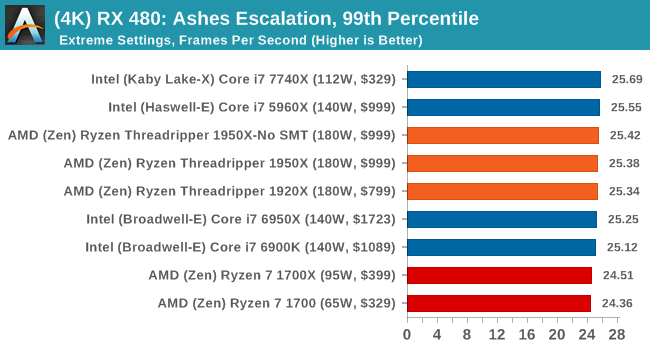
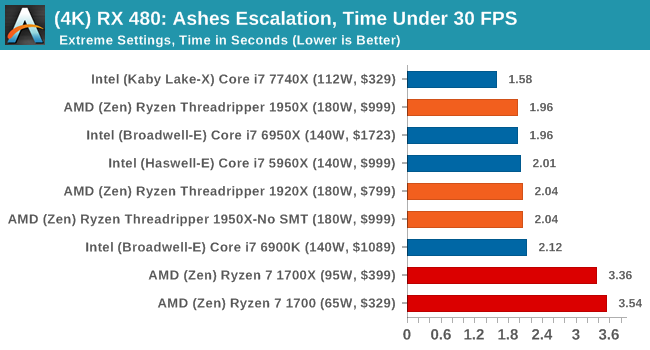
AMD gets in the mix a lot with these tests, and in a number of cases pulls ahead of the Ryzen chips in the Time Under analysis.



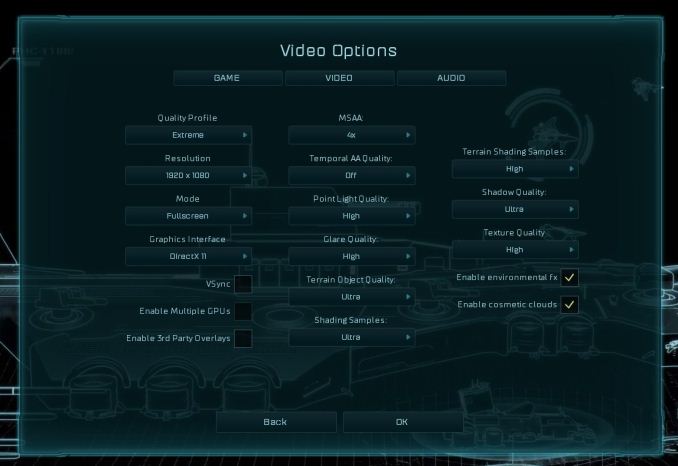








347 Comments
View All Comments
bigboxes - Friday, August 11, 2017 - link
You're acting just like the fanboi trolls you claim to loathe.Alexvrb - Sunday, August 13, 2017 - link
Yeah that was definitely a pot<->kettle comment. LOL.trivor - Saturday, August 12, 2017 - link
For those of you considering this CPU the fact is you are going to get MUCH better value by choosing one of the Ryzen CPUs - Ryzen 7 1800X is now at around $420 for 8/16 and the 7 1700 (8/16 again) has been on sale for as little as $299. Now, if you need the high thread counts for work on things like content creation and you still want to be able to run games it will be competitive (read: not the king of the hill) when you are running your games. So, if you do more than 50% of your computing time is gaming then go for an Intel CPU OR one of the Ryzen 5/7 consumer CPUs.Lord of the Bored - Friday, August 11, 2017 - link
Which would explain why the introduction doesn't mention the Netburst fiasco by name."The company that could force the most cycles through a processor could get a base performance advantage over the other, and it led to some rather hot chips, with the certain architectures being dropped for something that scaled better. " is, to my eye, actually attention-grabbing in the way it avoids using any names like Preshott, I mean Prescott and only obliquely references the 1GHz Athlon, the Thunderbirds, Sledgehammer, and the whole Netburst fiasco that destroyed the once-respected Pentium name.
But no, let's just say that "certain architectures" were dropped and there were "some rather hot chips" and keep Intel happy. They need that bone right now, though not as much as they did during the reign of Thunderbird and the 'hammers.
Hurr Durr - Friday, August 11, 2017 - link
If the unword "NetBurst" triggers you so much, it`s not processors you should spend money on, but shrinks.Lord of the Bored - Friday, August 11, 2017 - link
Hey, we were an Athlon house. I didn't suffer through the series of mis-steps that plagued Intel. I just thought the sentence was conspicuous in how hard it tried to not name names.mlambert890 - Saturday, August 12, 2017 - link
"name names"? There are 2 companies that make CPUs. Everyone knows Netburst was Intel P4 era. It's not Watergate ok?Conspiracy obsession has become a legitimate mental illness.
fallaha56 - Thursday, August 10, 2017 - link
handy not to show the new Intel chip struggle eh?Breit - Friday, August 11, 2017 - link
Is it possibly to bench the Intel CPUs (especially the i9-7900x) for those latency/single-thread tests with Hyperthreading turned off? This would probably give a better comparison to AMDs Game Mode and hopefully higher numbers too due to double the cache/registers available to one thread.cheshirster - Friday, August 11, 2017 - link
Skylake-X sucks at gaming.7800X is slower than 1600X.